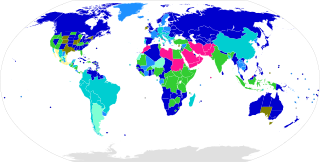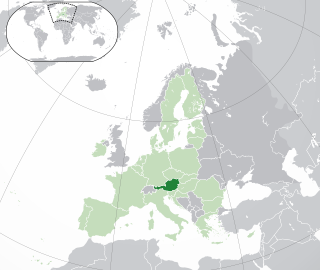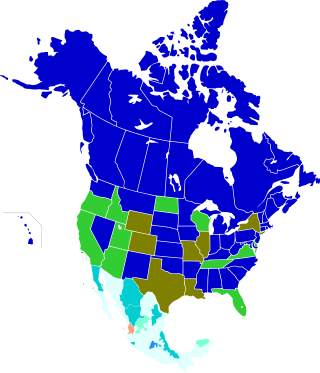
The age of consent is the age at which a person is considered to be legally competent to consent to sexual acts. Consequently, an adult who engages in sexual activity with a person younger than the age of consent is unable to legally claim that the sexual activity was consensual, and such sexual activity may be considered child sexual abuse or statutory rape. The person below the minimum age is considered the victim, and their sex partner the offender, although some jurisdictions provide exceptions through "Romeo and Juliet laws" if one or both participants are underage, and are close in age.

The Sexual Offences (Amendment) Act 2000 (c.44) is an Act of the Parliament of the United Kingdom. It set the age of consent for male homosexual sexual activities and for heterosexual anal sex at 16, which was the age of consent for lesbian and heterosexual sexual activities which did not include anal penetration. It also introduced the new offence of 'having sexual intercourse or engaging in any other sexual activity with a person under 18 if in a position of trust in relation to that person'.

Paragraph 175 was a provision of the German Criminal Code from 15 May 1871 to 10 March 1994. It made sexual relations between males a crime, and in early revisions the provision also criminalized bestiality as well as forms of prostitution and underage sexual abuse. All in all, around 140,000 men were convicted under the law. The law had always been controversial and inspired the first homosexual movement, which called for its repeal.

Lesbian, gay, bisexual, and transgender (LGBT) rights in Austria have advanced significantly in the 21st century. Both male and female same-sex sexual activity are legal in Austria. Registered partnerships were introduced in 2010, giving same-sex couples some of the rights of marriage. Stepchild adoption was legalised in 2013, while full joint adoption was legalised by the Constitutional Court of Austria in January 2015. On 5 December 2017, the Austrian Constitutional Court decided to legalise same-sex marriage, and the ruling went into effect on 1 January 2019.
X. v. the United Kingdom was a 1978 case before the European Court of Human Rights, challenging the Sexual Offences Act 1956 in the United Kingdom. The case addressed privacy protections and age of consent laws for homosexuals.
The legal age of consent for sexual activity varies by jurisdiction across Asia. The specific activity engaged in or the gender of participants can also be relevant factors. Below is a discussion of the various laws dealing with this subject. The highlighted age refers to an age at or above which an individual can engage in unfettered sexual relations with another who is also at or above that age. Other variables, such as homosexual relations or close in age exceptions, may exist, and are noted when relevant, for example in Indonesia.
The ages of consent for sexual activity vary from age 15 to 18 across Australia, New Zealand and other parts of Oceania. The specific activity and the gender of its participants is also addressed by the law. The minimum age is the age at or above which an individual can engage in unfettered sexual relations with another person of minimum age. Close in age exceptions may exist and are noted where applicable. In Vanuatu the homosexual age of consent is set higher at 18, while the heterosexual age of consent is 15. Same sex sexual activity is illegal at any age for males in Papua New Guinea, Kiribati, Samoa, Niue, Tonga and Tuvalu; it is outlawed for both men and women in the Solomon Islands. In all other places the age of consent is independent of sexual orientation or gender.
The ages of consent vary by jurisdiction across Europe. The ages of consent are between 14 and 18. The vast majority of countries set their ages in the range of 14 to 16; only four countries, Cyprus (17), Ireland (17), Turkey (18) and Vatican City (18), do not fit into this pattern. The laws can also stipulate which specific activities are permitted or specify the age at which one or other sex can legally participate. The highlighted age is that from which a young person can lawfully engage in a non-commercial sexual act with an older person, regardless of their age difference, provided the older one is not in a position of power, a relative, or is committing another form of exploitation. In some jurisdictions, including Italy and Hungary, there are exemptions if the age difference is within prescribed bounds. All jurisdictions in Europe have equal and gender-neutral age limits.

In North America, the legal age of consent relating to sexual activity varies by jurisdiction.

The age of consent in Africa for sexual activity varies by jurisdiction across the continent, codified in laws which may also stipulate the specific activities that are permitted or the gender of participants for different ages. Other variables may exist, such as close-in-age exemptions.
Age of consent reform is an effort to change age of consent laws. Proposed reforms typically include raising, lowering, or abolishing the age of consent, applying close-in-age exemptions, changing penalties, or changing how cases are examined in court. A related issue is whether or not to enforce ages of consent on homosexual relationships that are different from those enforced on heterosexual relationships. Organized efforts have ranged from academic discussions to political petitions.

The age of consent for sexual activity refers to an age at or above which an individual can engage in unfettered sexual relations with another who is of the same age or older. This age varies by jurisdiction across South America, codified in laws which may also stipulate the specific activities that are permitted or the gender of participants for different ages. Other variables may exist, such as close-in-age exemptions.

National Coalition for Gay and Lesbian Equality and Another v Minister of Justice and Others is a decision of the Constitutional Court of South Africa which struck down the laws prohibiting consensual sexual activities between men. Basing its decision on the Bill of Rights in the Constitution – and in particular its explicit prohibition of discrimination based on sexual orientation – the court unanimously ruled that the crime of sodomy, as well as various other related provisions of the criminal law, were unconstitutional and therefore invalid.
Laws regarding incest vary considerably between jurisdictions, and depend on the type of sexual activity and the nature of the family relationship of the parties involved, as well as the age and sex of the parties. Besides legal prohibitions, at least some forms of incest are also socially taboo or frowned upon in most cultures around the world.

Pederasty or paederasty is a sexual relationship between an adult man and a boy. The term pederasty is primarily used to refer to historical practices of certain cultures, particularly ancient Greece and ancient Rome.

This is a list of important events relating to the LGBT community from 1801 to 1900. The earliest published studies of lesbian activity were written in the early 19th century.

A sodomy law is a law that defines certain sexual acts as crimes. The precise sexual acts meant by the term sodomy are rarely spelled out in the law, but are typically understood by courts to include any sexual act deemed to be "unnatural" or "immoral". Sodomy typically includes anal sex, oral sex, and bestiality. In practice, sodomy laws have rarely been enforced against heterosexual couples, and have mostly been used to target homosexual couples.

In the United States, each state and territory sets the age of consent either by statute or the common law applies, and there are several federal statutes related to protecting minors from sexual predators. Depending on the jurisdiction, the legal age of consent is between 16 and 18. In some places, civil and criminal laws within the same state conflict with each other.

Geldenhuys v National Director of Public Prosecutions and Others is a decision of the Constitutional Court of South Africa which struck down as unconstitutional a law which set the age of consent at 19 for homosexual sex but only 16 for heterosexual sex.
Article 365 of the Sri Lankan Penal Code criminalizes "carnal intercourse against the order of nature" and provides for a penalty of up to ten years in prison.











